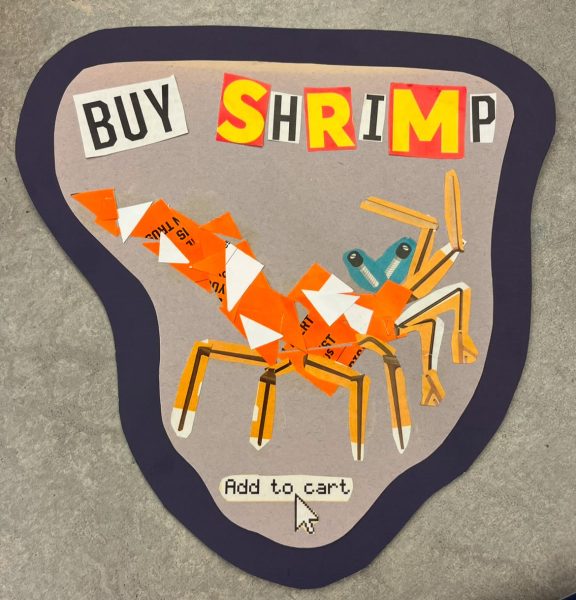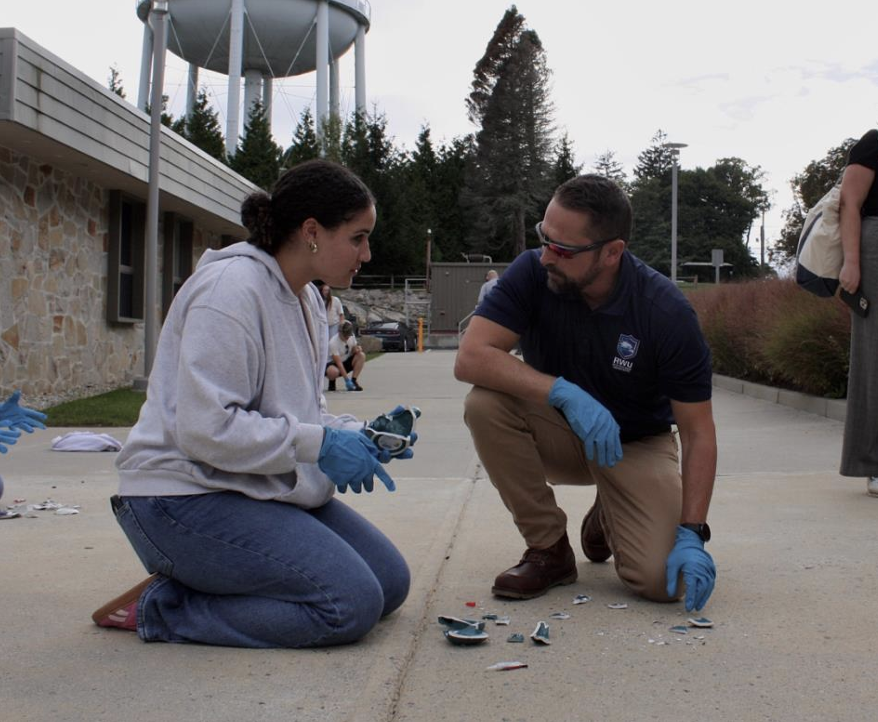Joshua Sears, a senior at Roger Williams University, has dedicated his thesis to studying “sexy shrimp,” scientifically known as Thor amboinensis. The shrimp’s unique name comes from its distinct movements: “When they are disturbed, they hold their tail straight up and wave it around, and they’re flamboyantly colored,” explained Sears.
These shrimp are circumtropical, living along the equator worldwide. “There is a subspecies that lives in the Caribbean, called Thor DiCaprio, named after Leonardo DiCaprio,” Sears shared.
His research focuses on the shrimp’s reproductive habits, development, and potential for aquaculture. Aquaculture is the breeding and raising of aquatic organisms.
Sears spends his days caring for the shrimp, monitoring their tanks, and collecting larvae to analyze their growth. “Once the larvae are produced, I go in and I count them one by one,” said Sears.
Using Excel and ImageJ software, he tracks measurement data. Through photography and a ruler, Sears measures the shrimp’s development through eight distinct larval stages. His goal is to create a detailed guide for aquaculture professionals, allowing them to better understand and raise these shrimp.
“I’m trying to get a photo of each of the stages and all the differences that they have with each other, as well as portraying that easily so that other people in aquaculture can use it to differentiate the stages,” said Sears.
Sexy shrimp have several qualities that make them ideal for aquaculture. Their short 26-to-30-day larval period is much faster than other species, such as fire shrimp and skunk cleaner shrimp, which can take up to 120 days. They are small, colorful, and affordable, costing around $13 to $14 per shrimp compared to $80 for each fire shrimp. Their playful behavior, including their signature “tail dance,” and symbiotic relationships with anemones make them a favorite for home aquariums. “Just like the clownfish and the anemone, you have the sexy shrimp and the anemone,” Sears noted.
Unlike species with delicate paddle-like appendages, sexy shrimp larvae are more compact and less prone to damage during rearing. “They’re just really easy to raise,” Sears explained. However, they require careful management to prevent cannibalism among the shrimp. “Even though they are small, they will still eat each other,” warned Sears.
Raising shrimp hasn’t been without challenges. Measuring their curved bodies has proven tricky, and the unpredictable nature of working with live animals has taught Sears to adapt. “You have to be ready for everything, and you have to be ready to not succeed, because the animals will throw every wrench in your plan,” Sears advised.

Despite the difficulties, Sears finds the work deeply rewarding. “I’m taking care of an animal and making sure it grows and does everything it needs to do. That’s the part that I find really rewarding,” he shared. This dedication comes from the knowledge that “this thing wouldn’t exist if I wasn’t here,” said Sears.
The shrimp raised in Sears’ study will soon be sold locally and nationally, including through Quality Marine in California. “There’s actually like 100 of my shrimps sitting there right now waiting to be sold,” Sears said. Their vibrant colors, ease of care, and affordable price make them a popular choice for small aquarium owners.
Sears’ work on sexy shrimp showcases the hard work and dedication he’s put into his senior thesis. Despite the challenges, he’s created something meaningful and rewarding, making it a perfect way to wrap up his time at RWU.








